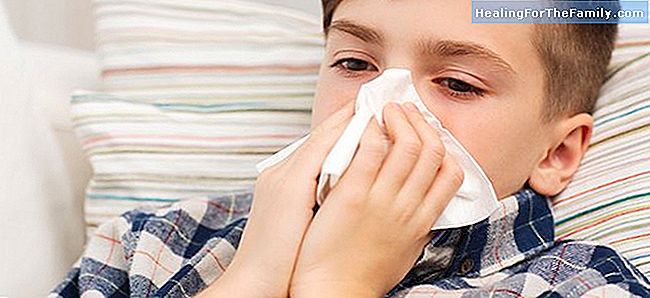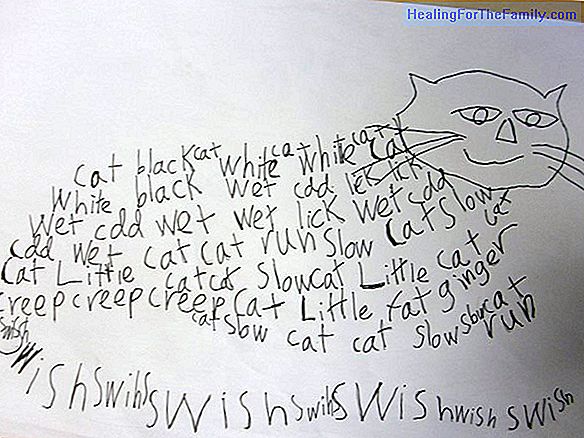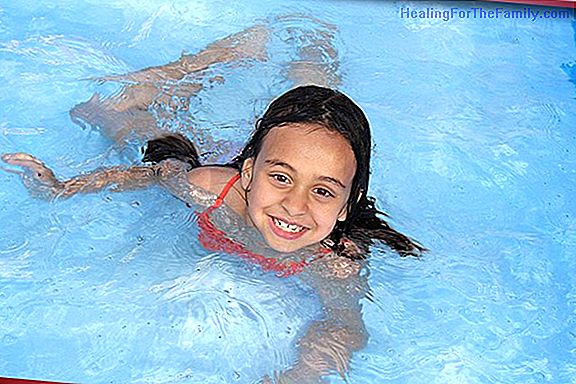The 10 most contagious diseases of school age
With the return to the classroom, the most common and contagious diseases among school-aged children return. Some are mild but annoying and others can be very serious or life threatening. If our child has any of them will develop antibodies for these diseases which will strengthen your immune system
With the return to the classroom, the most common and contagious diseases among school-aged children return. Some are mild but annoying and others can be very serious or life threatening. If our child has any of them will develop antibodies for these diseases which will strengthen your immune system. In some cases they are more or less contagious and their appearance starts from the nursery school at a very early age.Diseases that affect children in the school stage
In most cases children are vaccinated against most of these pathologies although according to the experts, prevention is important and instilling in children appropriate hygiene habits against possible contagions
1- Catarrh:

School-age children usually suffer from infections in the upper airways in the form of colds or pharyngitis. These pathologies cause nasal congestion, mucus and fever. Experts recommend in these cases the use of antipyretics but not antitussives, since cough helps to clean airway secretions. Derived from the accumulation of mucus, otitis may appear. It is inflammation of the middle ear and can cause fever and severe pain in the ears. It is advisable to go to the pediatrician to assess the treatment to be followed either by anti-inflammatory drops or use an antibiotic.
2- Conjunctivitis : is an inflammation of the membrane that surrounds the eye and the eyelid inside. This causes the production of tear to increase and the legañas appear. It is easily spread and its treatment requires an antibiotic.
3- Lice:are parasites that spread very easily, cause a lot of discomfort and are acquired almost randomly, with a special preference for clean hair. If we detect that our child has lice, we must apply a product to eliminate them and notify the school so that appropriate measures of prevention are taken against possible infections.
4- Gastroenteritis: In the first years of schooling of children it is usually more common the appearance of gastroenteritis causing vomiting, diarrhea, fever and abdominal pain. In children it is very easy to get it by fecal-oral route. It is essential to maintain a good hydration in the child and an astringent diet, and go to the pediatrician if we do not notice improvement with these measures.
5- Hand, foot mouth: At an early age, the disease known as 'hand-foot-mouth' is very common. It is an infection that can be spread by contact or by breathing during the incubation period, which is usually 3 to 6 days. This ailment initially causes fever, sore throat and discomfort and then appear in areas to which its own name refers to small ulcers in the form of red dots that are painful. Pediatricians advise administering antipyretics to control fever and wait for the symptoms of this virus to disappear, which usually lasts about 10 days.
6- Roseola: Among schoolchildren, it is also common to have roseola. A disease that causes very high fever and then the appearance of pink spots from the trunk to the extremities that do not cause itching. It is treated with antipyretics and may be accompanied by abundant mucus and sore throat.
7- Varicella: is a viral infection in which the person has blisters and it causes a lot of itching. It spreads very easily before the blisters appear until crusts are formed. Although there is a vaccine against this disease, it is a disease that has rebounded in recent years among the youngest.
8- Meningitis: It is an infection of the membranes that cover the brain and spinal cord, caused mainly by viral infections. It causes fever, nausea and vomiting and a stiff neck. To treat it requires antibiotics.
9 - Measles: is a disease caused by a virus. It is very contagious spread by contact with droplets from the nose, mouth or throat of an infected person. It causes a rash, fever, sore throat and white patches inside the mouth. There is no treatment to fight it. Despite the existence of a vaccine against this disease in recent years, there has been an upturn in the same.
10- Papera : are caused by a virus that is transmitted from one person to another by means of droplets of moisture from the respiratory tract and through direct contact with articles containing infected saliva. They are very contagious. They can cause facial, head and throat pain, inflammation of the salivary glands, and fever. There is no treatment against this disease.
Cristina González Hernando. Editor of Guiainfantil.com












